Current Projects
Site tidying
The Holly trees in the compound are being removed for two reasons. Firstly, their unchecked growth is impeding access to the ladder on the adjacent site’s tower and secondly, being due south of the solar panels, they are stopping sunlight reaching them until about 11.30am. A work party was organised for the morning of the 24th July 2025
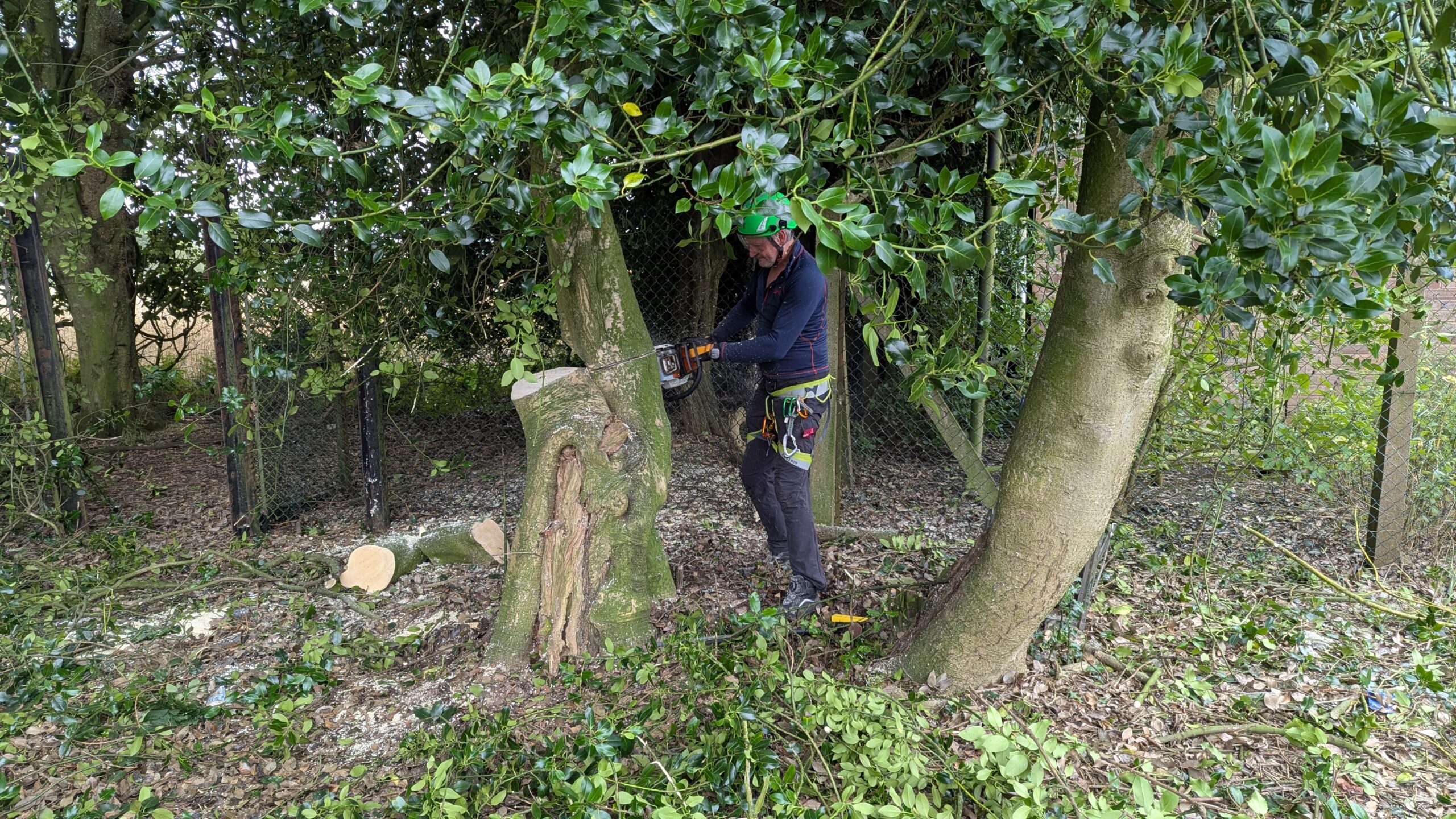
Good progress was made in the three hours available. Using three chainsaws we were able to clear the drooping branches around the base of the trees and cut down two trunks. The trunks were diced and loaded onto a large trailer and taken away by Graham M1ASR to use in his wood burner.
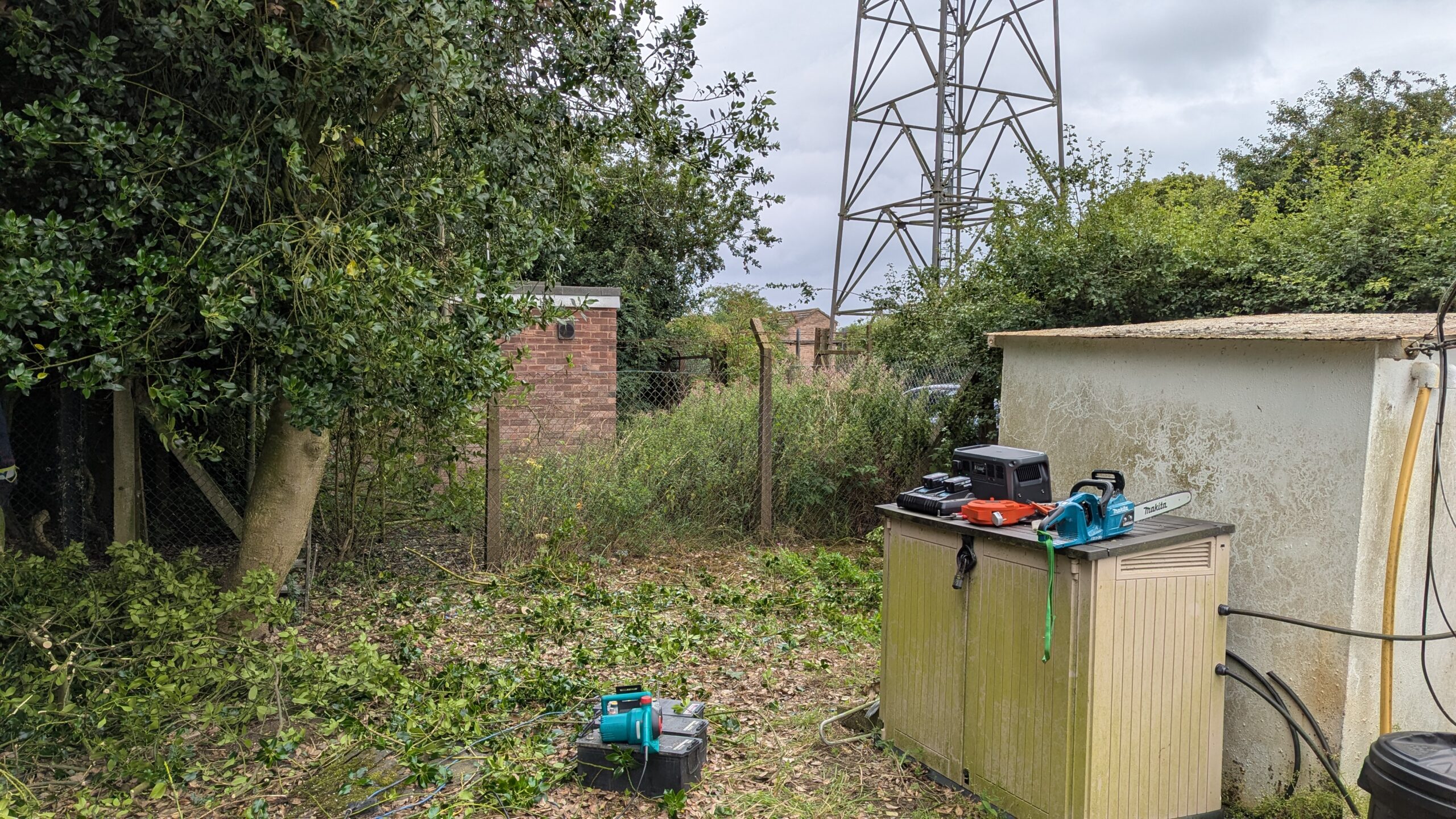
A further work party is planned for Sunday 27th July, weather dependent, to tackle the remaining Holly tree.
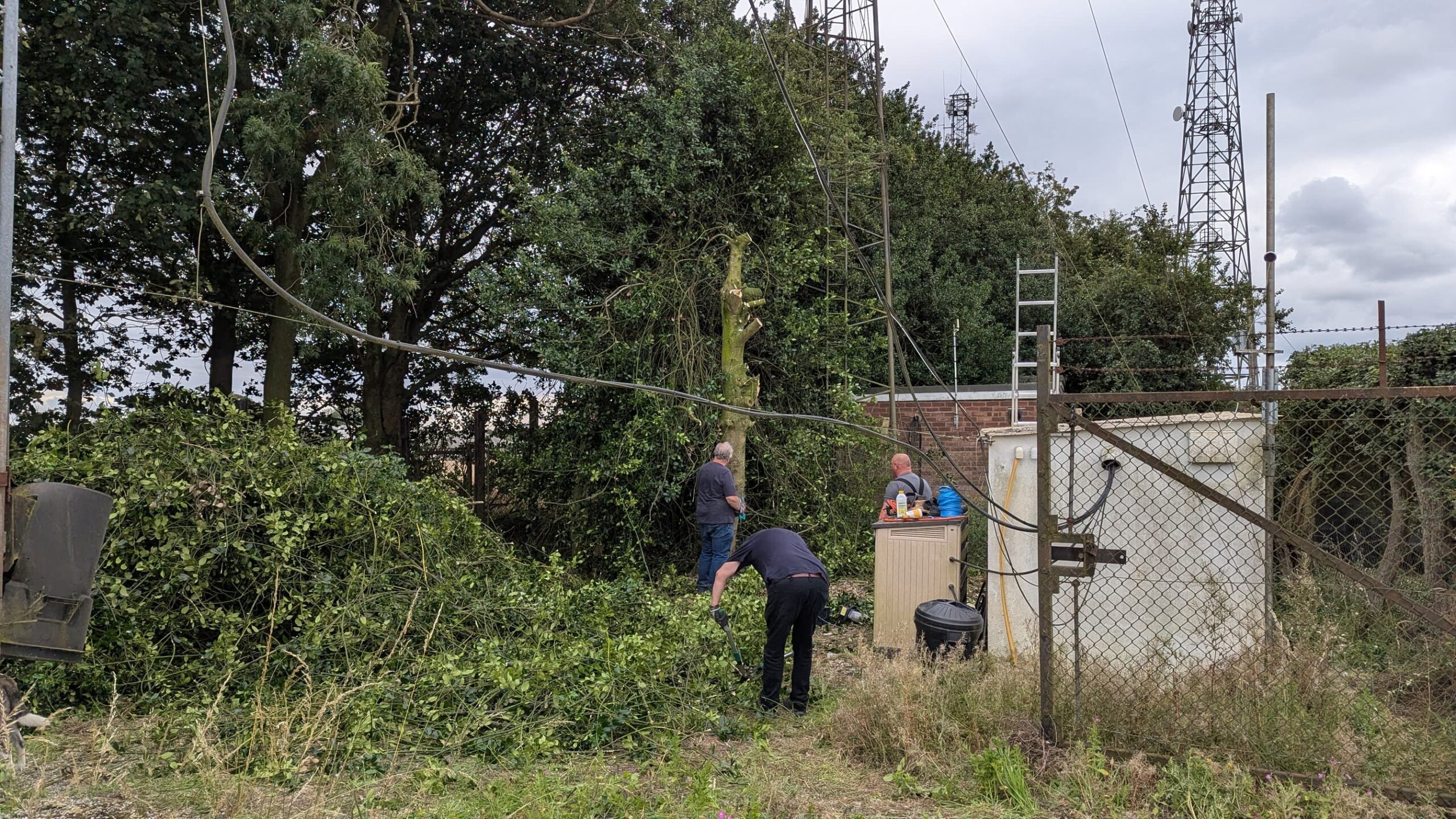
Renewable power
The largest drain on the finances of the Group is the cost of the electricity, currently running at just over £504 per annum. Of this, £245 is the standing charge, which has to be paid irrespective of whether any electricity is used or not. Economies have been made by removing the Windows computer that was used for the D-Star gateway and limiting the operating hours, but the balance of £259 can only be reduced by making use of solar and wind power as an alternative to mains supplied electricity.
In 2021, Tony G4SJI and Clive G3GJA purchased 6 second hand 250W solar panels from a recycling source in Scarborough. Richard G4YTV donated the timber to construct a frame from pressure treated softwood.
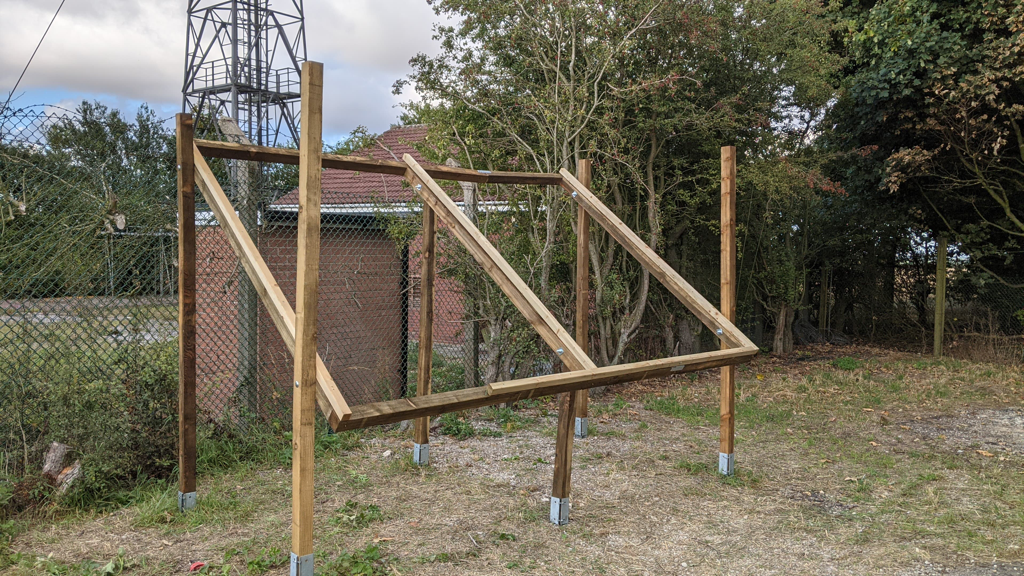
Four panels were mounted in the frame and were wired in series parallel to give 110V DC at up to 1kW output. It’s unlikely that 1kW will ever be achieved as the panels are not new and the only available location in the EYRG compound is partially shade by trees during the first part of the day. That may improve now that permission to remove a large Holly tree to the south of the panels has been given by the site owner. That is a enormous task for 2025 as the tree is 35 feet tall.
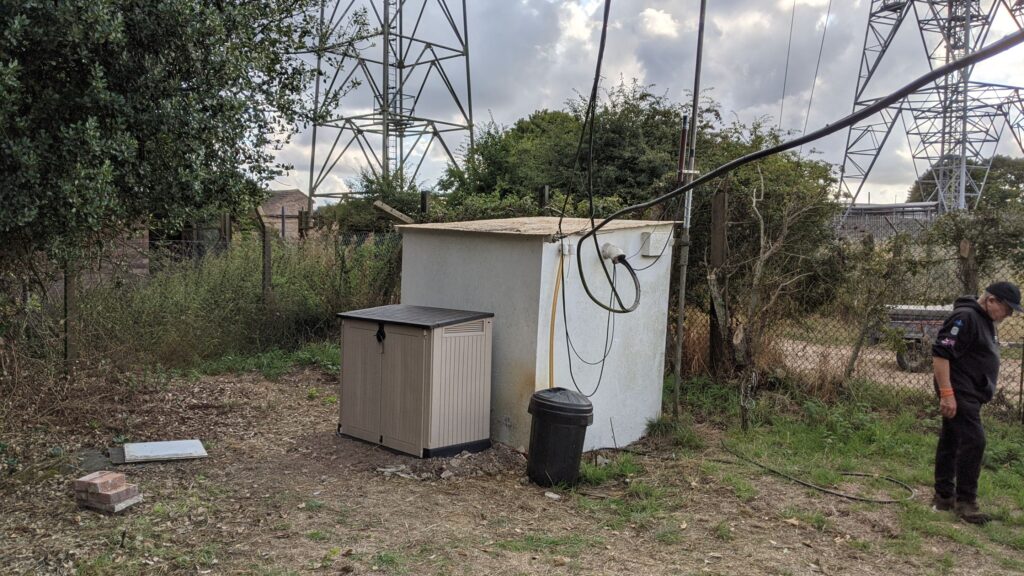
An underground cable was run from the frame back to a plastic garden tool store that houses the batteries. The tool store was placed against the site’s steel equipment hut and was chosen to be large enough to take 6 x 170ah lorry batteries, sourced by Paul M0DPH, and a charger/inverter.
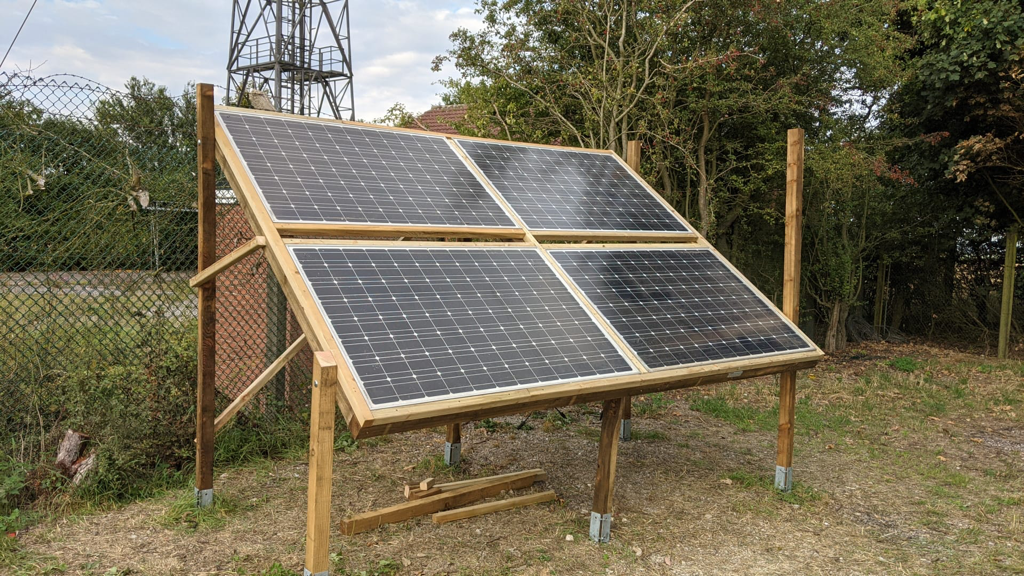
Once mounted in the frame, the four panels were wired up but the open circuit voltage was nothing like what was expected on three of the panels. Closer inspection revealed that the protection Schottky diodes built into the connection boxes had gone short circuit, possibly being the reason that they were sent for recycling. Fortunately, the diodes were easily sourced on Amazon and when replaced the voltages on all four panels were around the expected 55V. Wired in series-parallel, they supply around 110V DC off-load to the solar controller via an armoured underground cable. The frame was designed to accommodate the remaining two panels by extending it above the original four.
A lot of research was carried out to identify the best solution for the solar charge controller, based on the availability of batteries, panels and the power demand of 300W. A 24 volt system was chosen based around the Iconica 3kW solar charge controller/battery charger/pure sine wave inverter. Our timing for the purchase of this unit couldn’t have been better as its usual £880 price tag had been reduced by £250 in a sale!
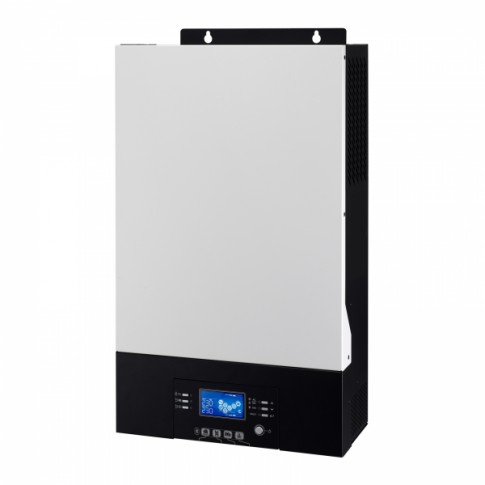
This unit has a ‘zero-transfer’ feature which allows it to seamlessly swap between mains and solar/battery power sources, fulfilling the need for an uninterruptable power supply (UPS). The mains supply, being overhead, is not reliable so a UPS was desirable to support Raynet operations.
At the end of 2024, all that remains to do is to link the controller to the mains supply and the output from the controller back to the loads in the hut.
Yaesu repeater
About three years ago, the Yaesu DR-1Xe repeater given to the Group by LAMCO of Barnsley failed in service. It was temporarily replaced by a similar unit loaned by Clive G3GJA to keep GB3HS on the air. Examination of the failed unit suggested that the fault was in the controller CPU, as there was no bias applied to the RF output devices when it should have been transmitting. It was eventually returned to Yaesu via LAMCO and after inspection it was deemed not repairable.

An opportunity to acquire a new Yaesu DR-2Xe repeater for GB3HS arose at the Hamvention in September 2024. Martin Lynch & Sons were offering £100 rally discount and Yaesu were offering a ‘Cashback’ deal of £300 bring down the cost of a brand new repeater to £850. Richard G4YTV then chipped in with a very generous donation of £450 towards the purchase leaving the Group to find the remaining £400. The finances of the Group were able to cope with that following some donations from members and clubs in the area. The new repeater will be installed during 2025, along with an overhaul of the filters and aerials used for GB3HS.
Completed projects
Netmore LoRaWAN
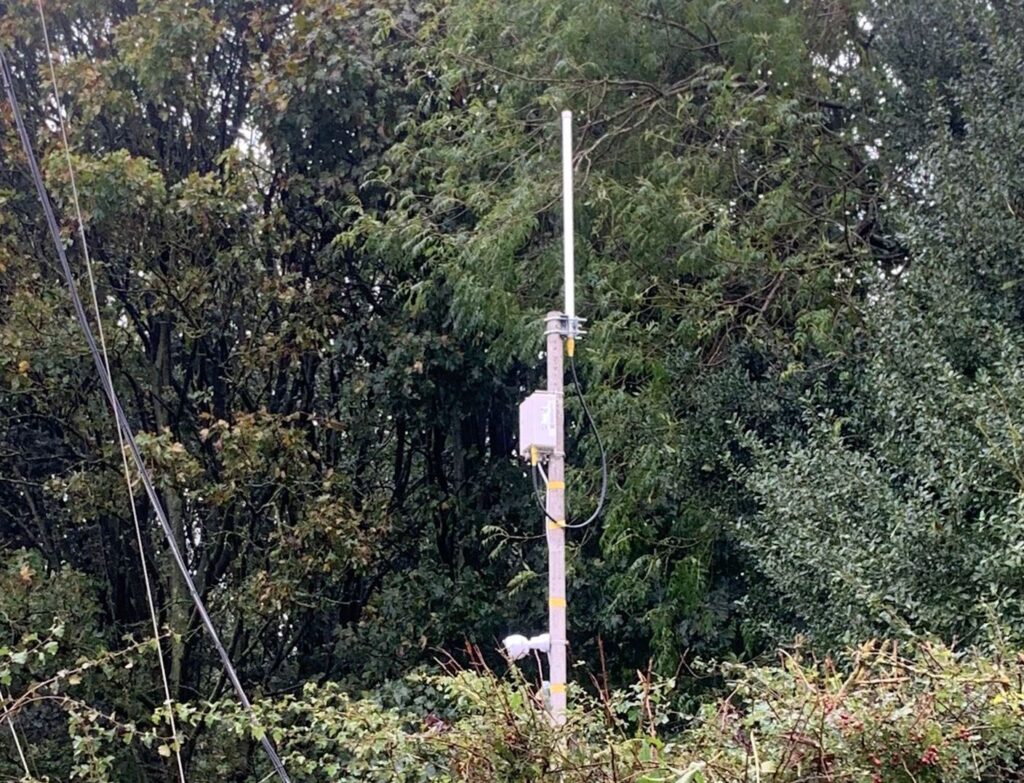
Many of you will have seen the adverts in RadCom looking for sites to take their ‘smart’ water meter reading equipment. The Group decided to sign up for this initiative as tests by Ken G8VDP showed that no interference was likely to be caused to EYRG systems. It comprises of an 868MHz colinear, receiver and a gateway box that includes a 4G cellular radio to place the readings heard onto the Internet. The income from this has placed the Group’s financial footing on much firmer ground.

The gateway and its colinear were placed in their final location on the tower at 20m AGL in August 2024. Previously, it had been on a 5m pole attached to the Group’s hut, but it was badly screened by the copse of trees to the east of the site.
Luffing Winch
The manual luffing winch was replaced by G4YTV and G3GJA with a 12v vehicle winch that was supplied with remote handsets. The increased head load, resulting from adding a dual-band co-linear and the 23cm Alford Slot, had made raising the tower to vertical after servicing the aerials physically exhausting, often needing two or more people to complete the task. A 3000kg rated winch was obtained from MM0CUG and has proved to be an excellent choice.
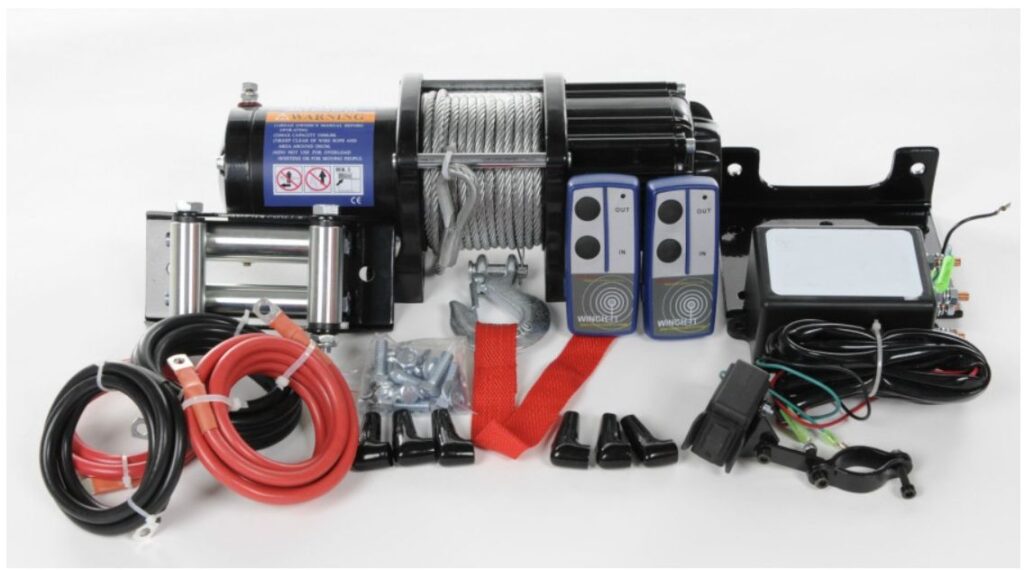
30v PSU & Reversing Switch for Main Winch
The main winch used on the tower to raise it to full height has always been motorised. The motor is a 30v/4A unit and drives the winch drum via two reduction gears and finally a worm drive on the periphery of the drum. The original power supply for this motor was very much a ‘Heath Robinson’ affair (read lethal!); the transformer, selenium bridge rectifier and reservoir capacitors were lashed onto a piece of plywood. Reversing was accomplished by reversing two wires poked into a receptacle!
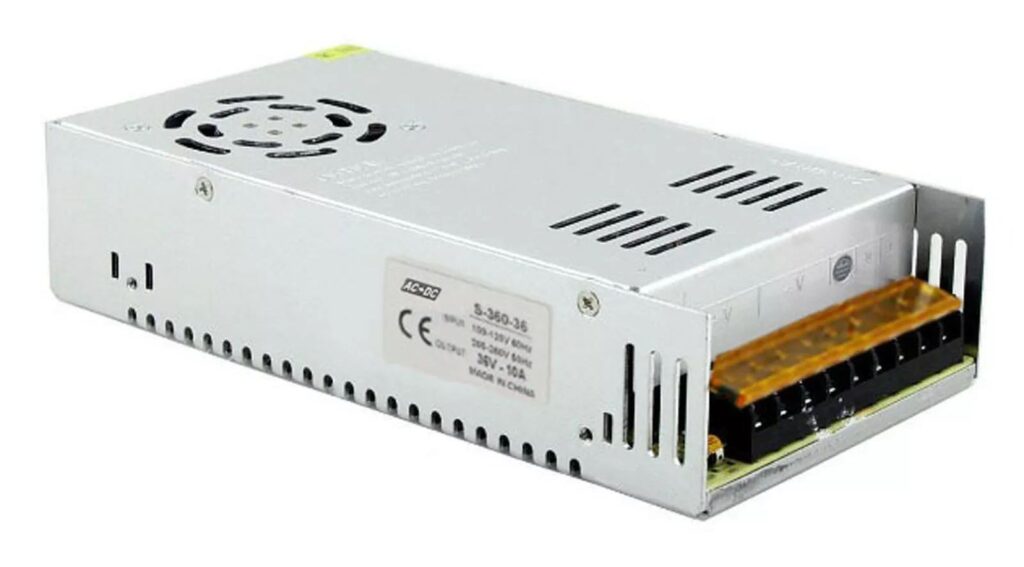
The rather unsanitary arrangement was replaced by G3GJA with 36v/10A enclosed frame switched mode power supply and a 10A double pole double throw centre off switch for reversing.
Security Camera
The entrance gate to the compound, the solar panels and the base of the tower are monitored by a Ubiquit 2k CCTV camera linked to an off-site DVR that stores two weeks of recordings. Apart from protecting the Group’s investments, it camera has picked up some of the wildlife that has managed to get into the compound. Pigeons, Kestrels, Magpies, Fallow Deer, Rabbits and Hares have been seen and a very close lightning strike was also captured.
